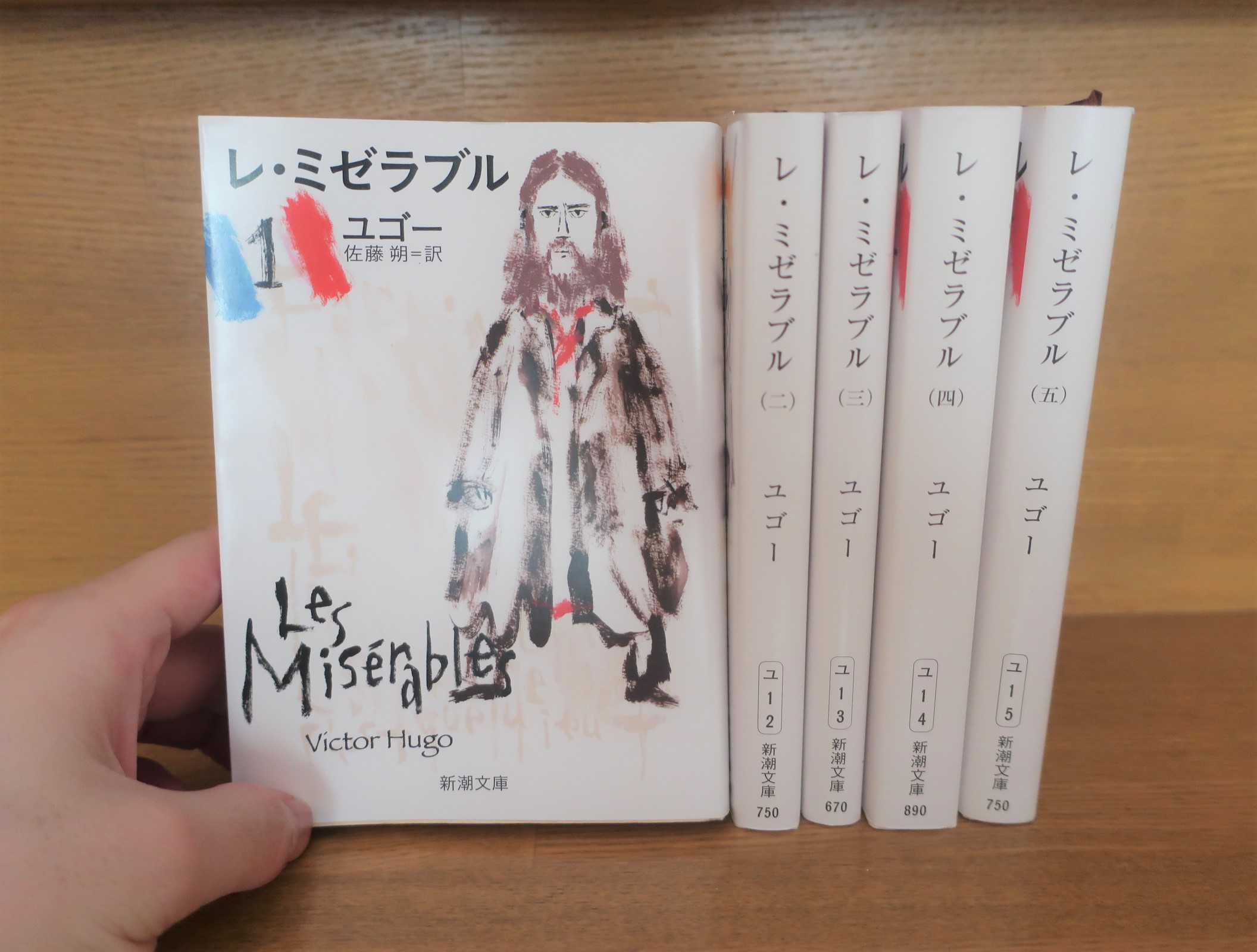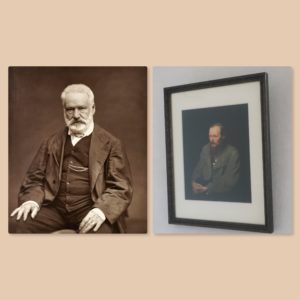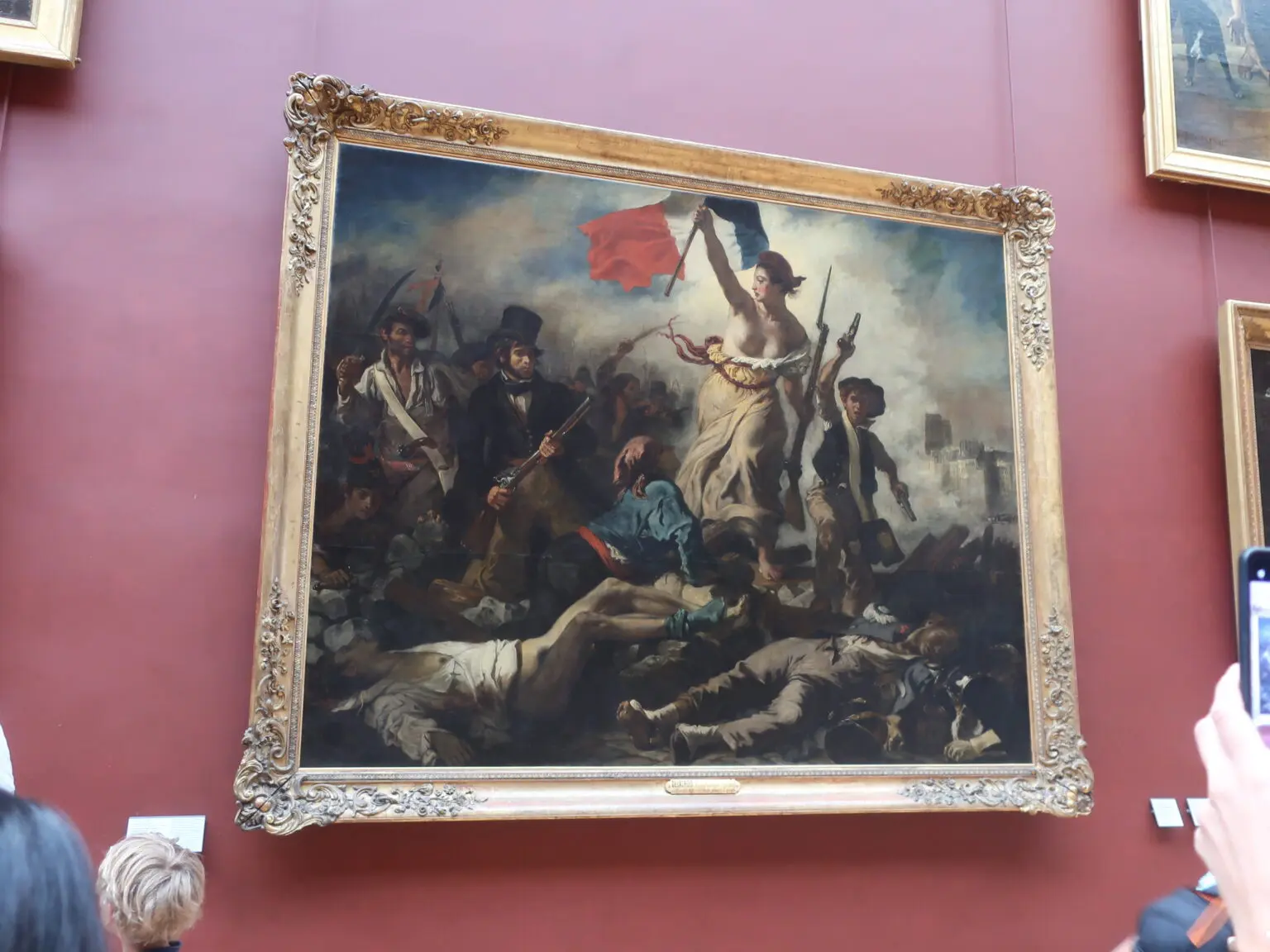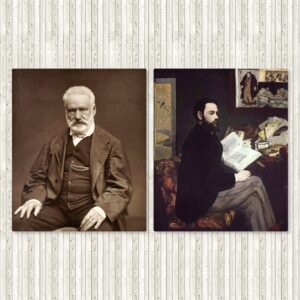「第一部 ファンチーヌ」あらすじと感想~偉大なる主人公ジャン・ヴァルジャンとは!

ユゴー『レ・ミゼラブル⑴ 第一部ファンチーヌ』概要とあらすじ
『レ・ミゼラブル』は1862年に発表されたヴィクトル・ユゴーの代表作です。
今回私が読んだのは新潮社版、佐藤朔訳の『レ・ミゼラブル』です。
今回から5巻ある『レ・ミゼラブル』を1冊ずつ紹介していきます。
早速裏表紙のあらすじを見ていきます。
わずか一片のパンを盗んだために、19年間の監獄生活を送ることになった男、ジャン・ヴァルジャンの物語。19世紀前半、動揺を続けるフランス社会を背景に、「この世に絶対的な悪は存在しない」という楽観的な世界観とキリスト教的な愛を交えて描く叙事詩的な大長編小説。本書はその第一部「ファンチーヌ」。出獄したジャンは、マドレーヌと名のって巨富と名声を得、市長にまでなる。
Amazon商品紹介ページより
わずか一片のパンを盗んだために、19年間の監獄生活を送ることになった男、ジャン・ヴァルジャン。
ジャン・ヴァルジャンという名を聞けば、おそらくほとんどの人が「あぁ!聞いたことある!」となるのではないでしょうか。この人ほど有名な主人公は世界中見渡してもなかなかいないかもしれません。
ですが前回の記事「ユゴー『レ・ミゼラブル』あらすじと感想~ミュージカルでも有名なフランス文学の最高傑作!」でもお話ししましたように、実際彼が原作ではどのように描かれているのかというと、かなり謎に包まれた人物であります。
そのジャン・ヴァルジャンの過去や彼の心の支えとは何なのかということがこの第一部「ファンチーヌ」で明らかにされます。
ということで早速この本を読み始めてみると、驚きの展開が待っています。
なんと、主人公のジャン・ヴァルジャンがまったく出てこないです。
この作品で最初に描かれるのはミリエル司教という人物。
彼は高潔な高位聖職者で、一言で言うならばいい人過ぎるほどいい人なのです。
この物語は最高に善良な司教ミリエル氏がいかなる人物であるかというお話からスタートします。
彼はいつも自分の手元にあるお金のほとんどを貧しい人たちに分け与え、人知れず街のために身を捧げます。
そんな彼の善良さを語る物語がなんと、111ページまで続きます。
つまり、主人公が登場するまでに100ページ以上も一見ストーリーとは全く関係なさそうな司教のエピソードを見せられることになるのです。
ミュージカルや舞台ではこのくだりはカットされていて知ることはありません。
ですがこのミリエル司教こそ、19年間の監獄生活で身も心も荒みきっていたジャン・ヴァルジャンの生き方を決定的に変える人物であり、彼の存在がなければ後のジャン・ヴァルジャンはありえないというほどの重要人物なのです。
映画ではいきなり現れてジャン・ヴァルジャンを救いますが、原作では100ページ以上もかけてミリエル司教の人柄を私たちは見つめることになります。
それによってジャン・ヴァルジャンが救われた瞬間の重みがまさに100ページ分強まるのです。
ミリエル司教がいかに偉大な人物か、そして絶望に苦しむジャン・ヴァルジャンの心の葛藤、そして救い。
この辺りの描写が余すことなく原作では描かれています。
「一見物語とは関係なさそうな話が延々と続く」、これが『レ・ミゼラブル』の特徴であります。この後も何度もそういう場面が出てきます。もはや脱線といってもいいくらい面食らうものもあります。
勇んで『レ・ミゼラブル』を読もうとしたはいいが挫折してしまったという人が多いのはここに原因があるとも言われています。
たしかにそういう箇所は少し我慢が必要です。何ならここは軽く読み流すくらいでもいいかもしれません。そこまで根詰めて熟読する必要はありません。(もちろん、熟読しても面白いですが)
ですがこの部分があるからこそ、後の物語で必ず効いてくるものがあるのです。これが下準備となり、後の物語にもっと感動できるようになります。ここを我慢すればご褒美が待っています。
『レ・ミゼラブル』が長いのはこうした遠回りが多いからなのです。
さて、物語は司教と別れ新たな人間になることを誓った後に、ジャン・ヴァルジャンがマドレーヌと名乗り、ある街の名士となります。
彼は独自の工法で大きな利益を上げる工芸品を生み出し、町全体を繁栄させます。
高潔な人柄から彼は町の人から慕われ、辞去し続けてはいましたがついに市長となります。
ここから物語は動き出し、不幸なファンチーヌやその娘コゼット、ずる賢いテナルディエ夫妻、宿敵ジャヴェールなど『レ・ミゼラブル』の物語すべてを通して重要な役回りを演じるキャラクターたちと出会っていきます。
この記事だけではもはや書き切れないほど盛りだくさんの内容です。
映画や舞台では時間の都合上カットされてしまったシーンがものすごい量あります。
これまでお話ししてきましたミリエル司教や、ファンチーヌの過去などなどひとつひとつ紹介していくには膨大な分量が必要です。
お話ししたいことは山ほどあるのですが概要とあらすじはここまでとさせて頂きます。
以下解説記事のリンクを掲載しますので興味のある方はぜひこちらもご覧ください。





感想―ドストエフスキー的見地から
ドストエフスキーが愛した『レ・ミゼラブル』。
彼はどんな気持ちでこの作品を読んだのだろうか。
そんな好奇心から手に取ったこの小説は私の想像のはるか上をいく面白さでした。
まずジャン・ヴァルジャンとミリエル司教の出会い、そしてジャン・ヴァルジャンの救いのシーンがとにかく素晴らしいです。
ただ善い人に出会って改心するというレベルをはるかに超えて、人間そのものの救済、善と悪の葛藤、そして絶望から立ち上がる不屈の力がそこには描かれていました。
ユゴーは『レ・ミゼラブル』を通して、人間の持つ根源的な力、世界をよりよく生きていくとは何かを読者に問いかけます。
たしかに『レ・ミゼラブル』のタイトル通り、「みじめな人々」の描写は心をえぐられるかのようです。
しかし、この物語はそんな境遇下でも世の中と向き合い戦い抜く人々、そして救われていく人々を描いています。
ジャン・ヴァルジャンという力強い英雄は私たちをそんな戦いへと導き、強く生きたい、善く生きたいという勇気を与えてくれます。
また、第一部の表題となっているファンチーヌ。
彼女はもともと田舎からパリに出てきた貧しい女工でした。当時の女工の生活は肉体的にも精神的にも苦しく、そんな苦労の中出会った男と恋に落ちます。
しかし男ははなから遊びとしか考えていません。男は身勝手な理由で彼女を捨ててしまいます。
しかも悪いことに、すでにその時彼女は妊娠していたのです・・・
彼女の転落はここから始まります。
大切な娘コゼットを救うため、預け先のテナルディエ夫妻に必死にお金を送ります。
ですが、子供がいるという理由だけで不貞な女だと中傷され仕事を首になってしまいます。
そこから先はあっという間に悲惨へとまっしぐらでした。自慢だった美しい髪を売り、(実際には病気でも何でもないのに)娘が病気だから薬代を払えと催促されると、お金のない彼女は自分の歯をも売りました。そして何も売れるものがなくなると、彼女は娼婦とならざるをえなくなってしまったのです。
ですが最後まで彼女の心は高潔なまま。
絶望的な悲惨の中、愛する娘コゼットのために最後まで祈り続けます。
後にこの転落を知ったジャン・ヴァルジャンは彼女を救おうとします。
彼はそんな彼女の姿に打たれ、こう述べます。
「あなたは神さまの前ではいつでも操の正しい、汚れのない女なのです。ああ!可哀そうに!」P374
「あなたはずいぶん苦しんだ。可哀そうな母親として!ああ、嘆いてはいけない。今では、あなたには神に選ばれた者の資格がある。人間はこういうふうにして天使になるのです。それは人間の罪ではありません。ほかにどうしようもないのです。いいですか、あなたが出てきた地獄は、天国の第一の姿なのです。そこからはじめなければならなかったのですよ」P377-378
新潮社版、佐藤朔訳『レ・ミゼラブル㈠』
ファンチーヌ自身も娼婦としてしかお金を稼げなかったことや、コゼットを幸せにしてやれなかったことを悔やみ、嘆いていました。
そんな彼女をジャン・ヴァルジャンは温かく見守り慰めるのです。
こうした高潔な娼婦、愛する家族を守るためにならざるをえずしてなってしまった娼婦のイメージは『罪と罰』の主人公ラスコーリニコフを救うソーニャという女性と重なるものがあります。
ラスコーリニコフの恋人となるソーニャも貧しい家族のために、身体を売ってお金を稼いでいました。
しかし彼女ほど高潔な心を持った人間はラスコーリニコフにとっては衝撃的なものでした。
娼婦であることは宗教的にも社会的にも罪とされていました。しかしその罪あるはずの人間がこの上もないほど高潔であり善なる人間だったのです。
こうなると「罪」とは一体何なのか。社会が言う「善」とは一体何なのか。
はたしてこの世の中の何が罪で何が罰に値するものなのかという根源的な問いが現れてきます。
『罪と罰』の構成がドストエフスキーの頭に浮かんだのは1865年のことです。つまり、ドストエフスキーが『レ・ミゼラブル』を読んだ3年後にあたります。
もしかしたら、彼の頭の中には『レ・ミゼラブル』のファンチーヌのイメージや虐げられた娘コゼットのイメージが強く残り、それが『罪と罰』のソーニャに反映されたということもあるのかもしれません。
『レ・ミゼラブル』、第1巻から非常に面白いです。もう止まりません。まさかここまで面白いとは思ってもいませんでした。
やはり名作と言われる作品は違いますね。素晴らしいの一言です!
以上、『「第一部 ファンチーヌ」あらすじと感想~偉大なる主人公ジャン・ヴァルジャンとは!』でした。
Amazon商品ページはこちら↓
レ・ミゼラブル(一)(新潮文庫)次の記事はこちら

前の記事はこちら

関連記事














コメント